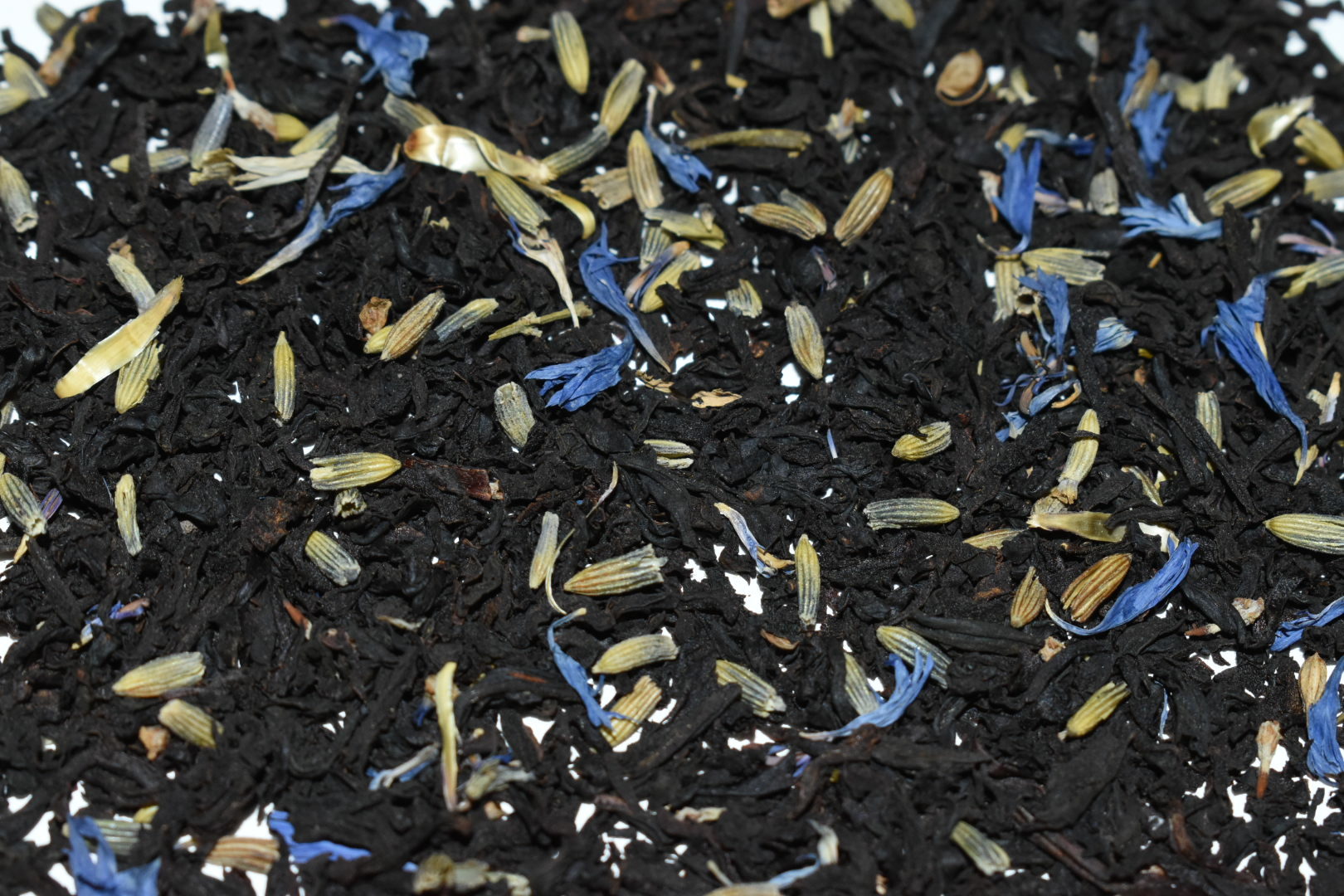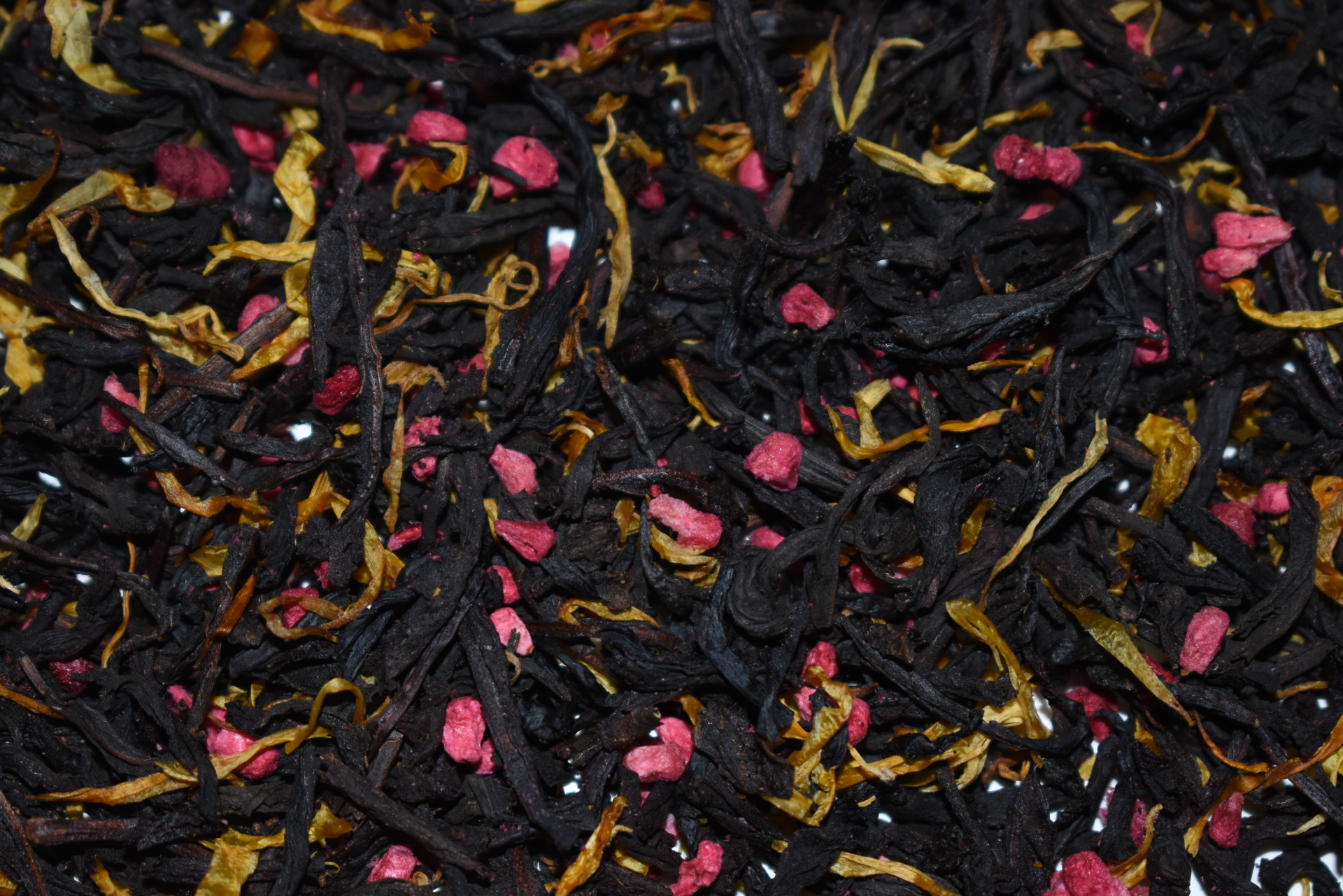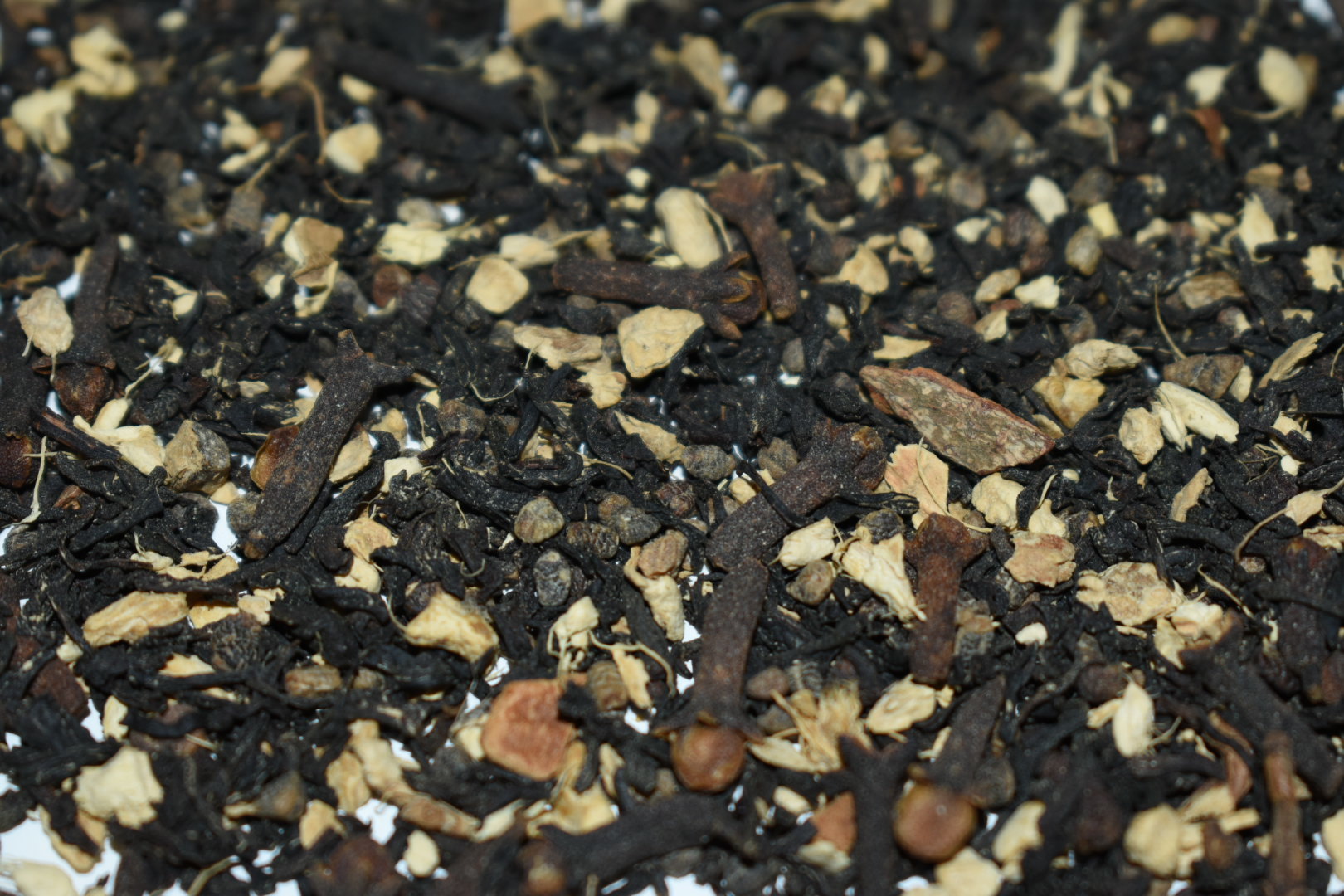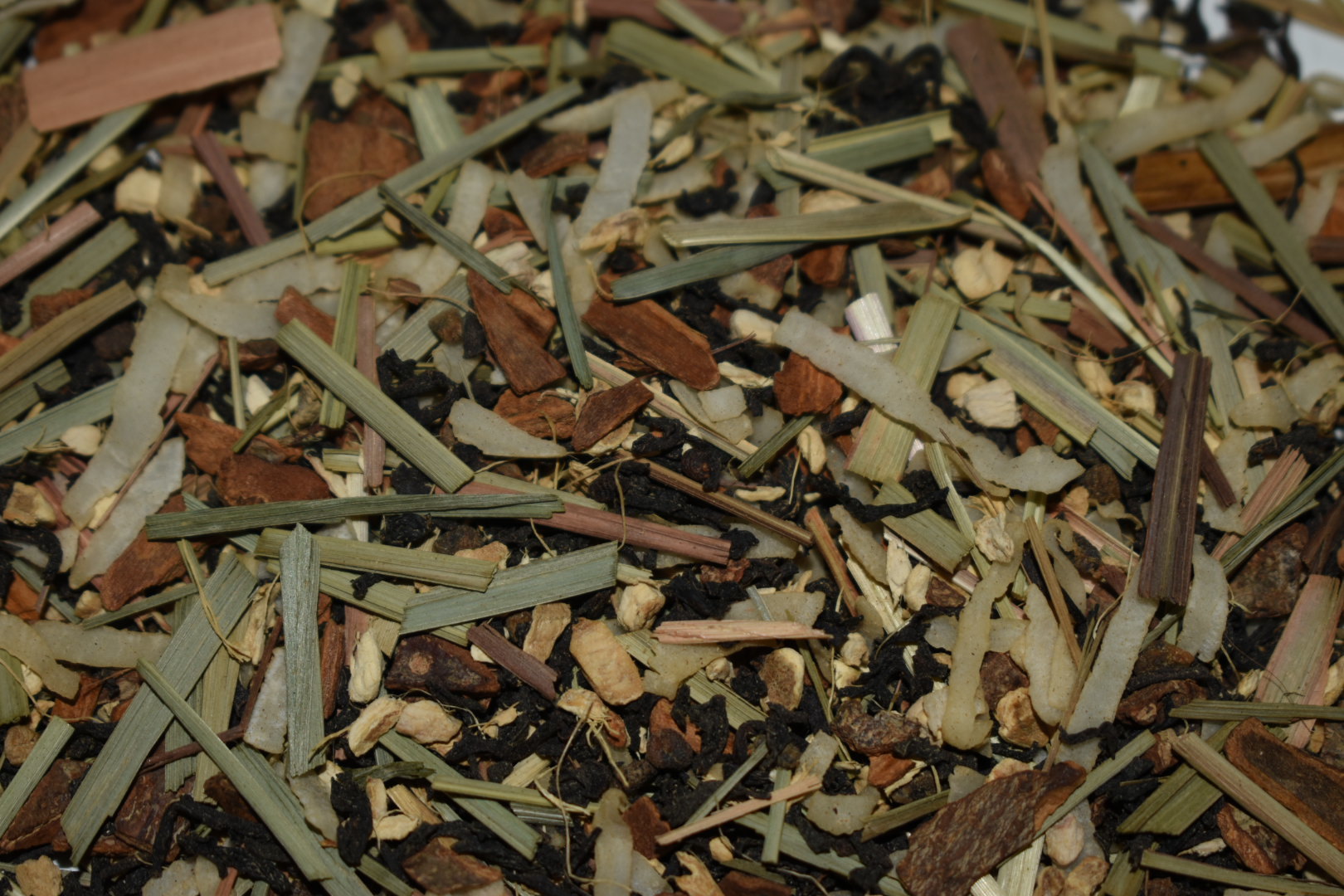Black Tea
~Teas & Such
Black Tea utilizes the five basic steps of oxidation. These steps are followed in a very linear form; they are generally not repeated on a single batch. The tea is made completely within a day. The brewed liquor of a Black tea ranges between dark brown and deep red. Black teas offer the strongest flavors and, in some cases, greatest astringency. Black teas from India and Sri Lanka, are regularly drunk with milk and sugar and are the most popular bases for iced tea.

Black tea is currently the most popular in the US, enjoyed mainly as iced tea. The fame of black tea is due to many factors, including the invention of the tea bag in 1904 by NYC tea merchant Thomas Sullivan. Recent studies have shown that black tea provides similar health benefits to green tea.
Varieties produced in these countries include Darjeeling, Ceylon, Keemun, Lapsang Souchong, Yunnan, and Assam, just to name a few. Recent additions to the family of countries that produce black teas include Kenya, Argentina, Thailand, and even the United States.
Tea plants thrive in tropical and subtropical climates, rooted in well-drained soil. Depending on the variety, they enjoy high or low elevations. Plenty of rain is good, but slightly they still thrive with less than ideal, the stress makes the leaves grow more slowly and develop deeper flavor.
Actually, the stress of high altitude is one of the factors, which make Darjeeling teas, grown at 5,000-7,000 ft. in the Himalayas so unique. Some varieties do well in direct sunlight or slightly shaded for part of the day. As luck would have it, good tea growing conditions have been found in Charleston, SC, where a plantation for Bigelow Tea is maintained on a small island. In Hawaii, tea growers are cropping up everywhere in recent years due to the decline in the Hawaiian sugar industry. Washington and Oregon also boast their own tea growers, as conditions in the Pacific Northwest are very similar to those in China's mountainous regions.
When most ask for a cup of tea, they picture a black tea. The black tea process was derived from the oolong tea process, which uses similar methods, but does not oxidize the tea for the same amount of time. What we call black tea is known in China as red tea (hong cha), referring to the reddish color of the brew. This reason for the discrepancy is said to be due to a simple error in translation. The mistake stuck, and the western world has been describing it using the wrong color ever since. It is important to note that this is not to be confused with the South African tisane Rooibos, which is colloquially referred to as "Red Tea" as well. In fact, the British have confused the definition of black tea even further. If you walk into a tea parlor in London and ask for a cup of "black" tea, one would assume that you are requesting tea without milk added to it.
While some other teas may or may not receive a thorough grading after final drying, black teas are always graded and sorted. This is because many more sizes are created during the rolling stage, so sorting them for uniformity is crucial. Otherwise, the flavor of the tea will change drastically from cup to cup, due to the leaf size, surface area exposed, and flavor extraction rate.
The flavor of black tea varies greatly; some are flowery, some malty, some spicy, and some nutty. Generally, black teas should be steeped using boiling water for three to five minutes. An exception would be first flush, or 'spring', Darjeelings. The first flush harvest is made from very delicate leaves and often the finished product looks very much like a green tea (even though it is processed like a black tea). This tea is better with slightly cooler water and a shorter steep. Special attention should be given when preparing black teas, as steeping them too long will quickly result in a bitter taste. Due to their stronger flavor and the use of hotter water, black teas generally cannot handle multiple infusions very well. So choose wisely a steep well!
Top
Back





